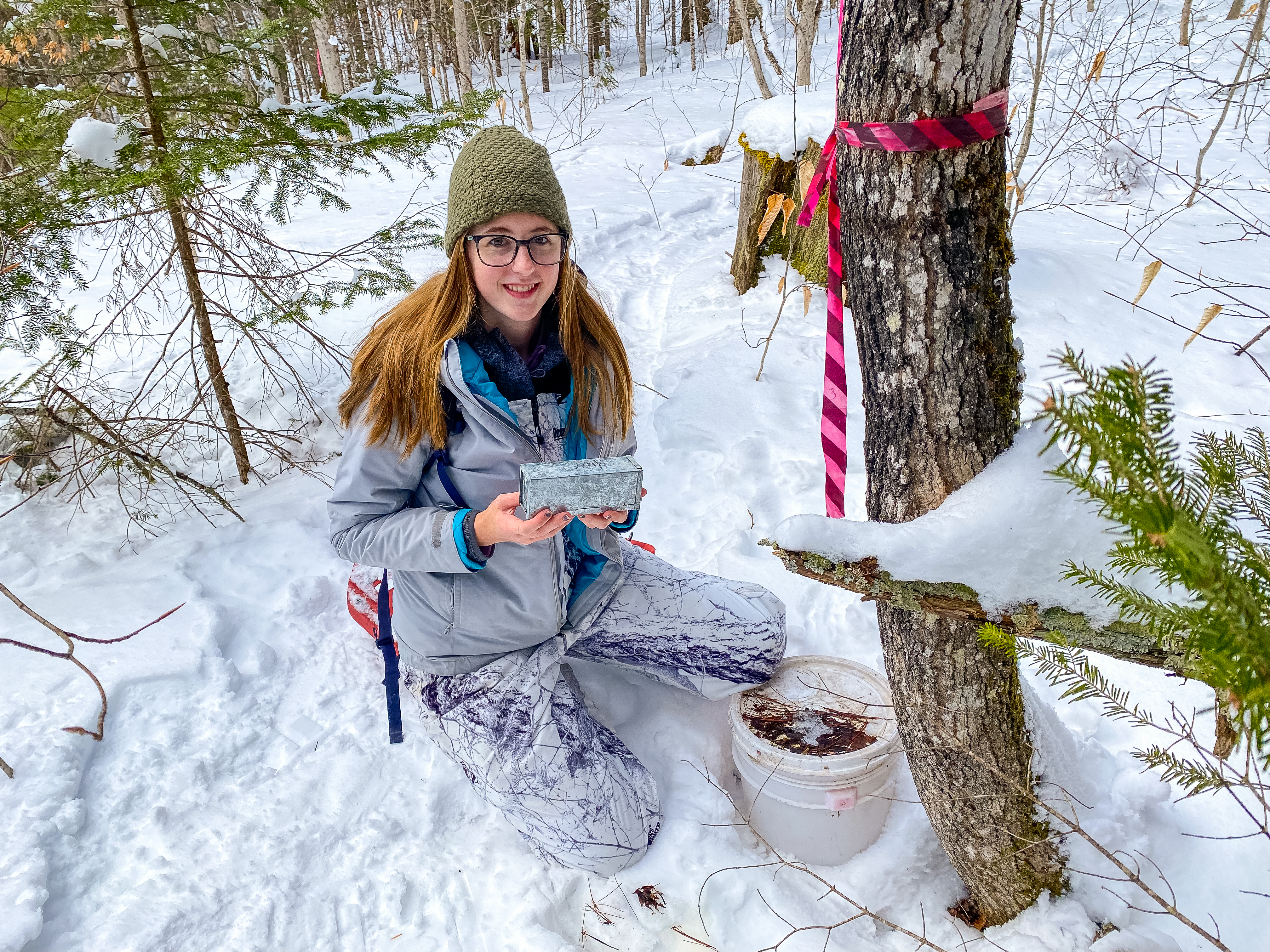Recent Headlines
Spring Break in Wintry Adirondacks

ESF student Lauren Craige, a senior from Northern Virginia, perched in the snow at the College's Newcomb Campus in the Adirondacks and talked about an exciting development in the Winter Mammalian Ecology course she was taking during her spring break.
In her hands was a small-mammal trap occupied by that day's catch. "It looks to be a mouse or vole, we're not sure yet," she said. "We have to open it up later and check. It's really exciting."
Craige was one of 15 students who opted to spend their break in the wintry environs of ESF's Huntington Wildlife Forest in the middle of March. They learned about the properties of snow and the methods animals use to adapt to winter conditions, and practiced live-trapping and survey techniques.
"We want people to have these experiences so when they leave school, they have already done things like figuring out how to ask a hypothesis-driven question," said Stacy McNulty, an ecologist and associate director of research at the Newcomb Campus who teaches the course. "It's a field course; it's very hands-on. Everybody gets to do things instead of just watching, whether it's working with animals or collecting snow measurements."
McNulty said the seasonality of the course makes it one of the few of its type in higher education. In addition to studying winter conditions, the students learn about predator-prey relationships, earth-atmosphere processes, and Adirondack history. The lessons weave principles in such topics as ecology, energetics, animal physiology, and behavior.
"It's a chance to broaden students' thinking," McNulty said. "We mix current seasonal conditions with the historic record: Is there an ice layer in the snow that affects how plants and animals respond to the subnivean movement of heat and water? In addition to understanding how the snowpack forms and changes through winter, what wild food was available last autumn that impacts survival of animals until the spring? If students are going to be professionals in the field, we want to challenge them with those questions."
Ben Andrews, a senior studying conservation biology, said the winter course will make him more competitive in the job market. He is interested in doing research that involves mammals; one of his goals for the week was to learn more about tracking small mammals.
ESF graduate student Jess Proctor said the course was "a lot of work but tons of fun." She had never paid much attention to snow before but said she was fascinated to learn about how its different layers function and how it shapes ecosystems. She said the lessons are valuable regardless of a student's career goals.
"Being a good scientist means understanding ecosystems and all their functions even if you're not necessarily going into working with mammals. Understanding how life functions is really important."